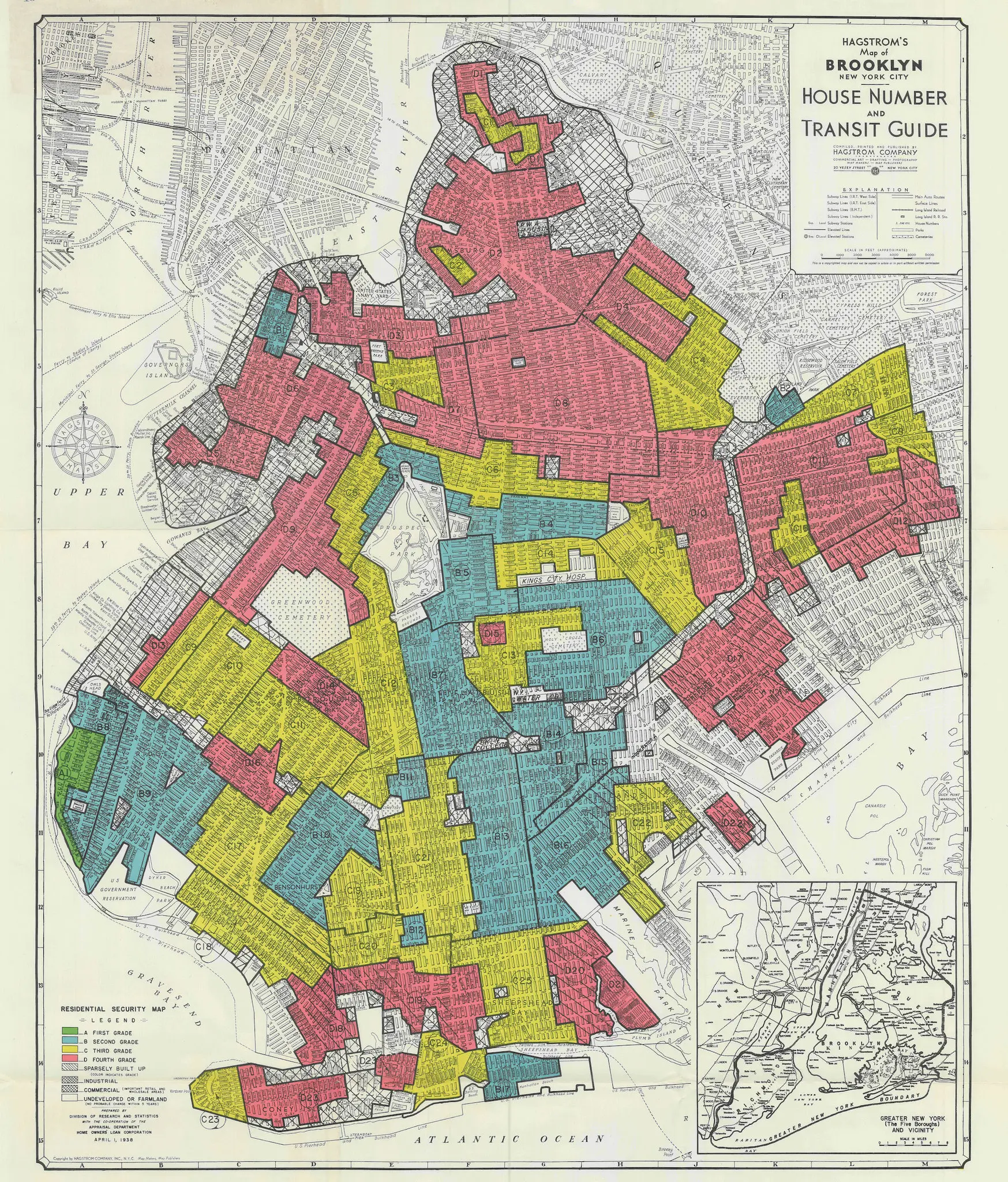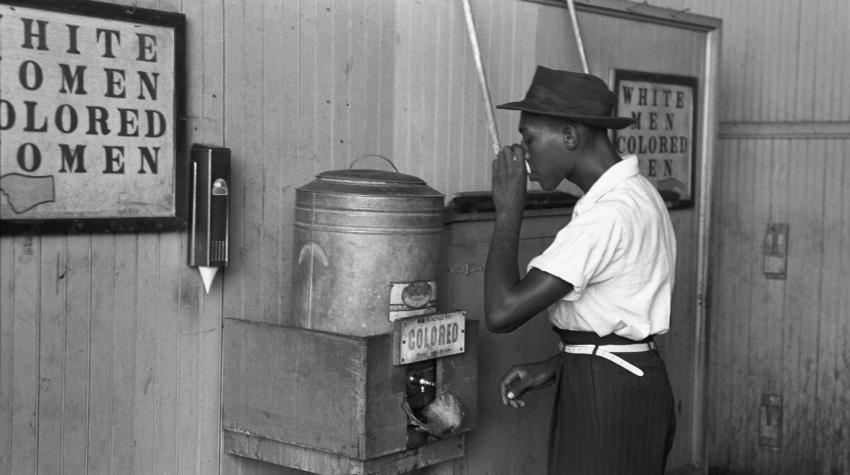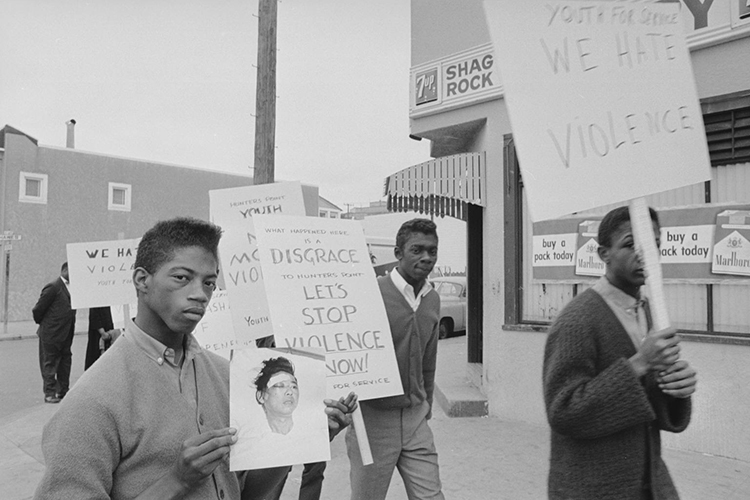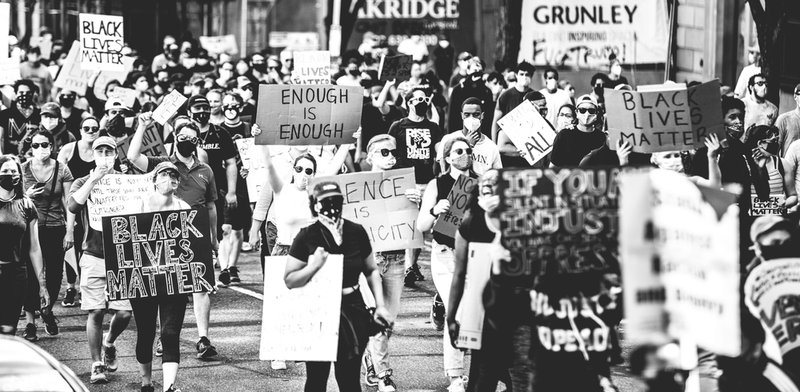By Socratis Santik Oglou,
The problem of race has always been a reality in America. The country itself was built on the degradation and in consideration of black people’s lives. The end of all the injustice should have been the abolition of slavery, but they persisted, however, in other forms, one of which nowadays is the so-called systematic racism. In my opinion, racism in the United States’ system still exists, as we saw in 2020 with the Black Lives Matter movement. This article is about some of the racial discriminating departments of the United States’ system throughout history and also a way to prove that racial discrimination towards the black community from the system still exists.
Starting with redlining. It was a tactic introduced around 1930 that refused services or made them too expensive and therefore inaccessible to African-Americans. Services like healthcare, security, banks, and even some markets. To make it clearer, the banks and the government marked with red lines which areas they wanted to exclude, hence the name. One of the most aggressive forms of redlining was the refusal to provide a mortgage. They were more likely to give a mortgage to a white family with a lower income than a black one with a higher one. Also, the state-financed the nonred areas differently than the red ones. The red areas were not invested by the state, education was not properly funded, and citizens could not obtain the stability to have a home, creating a huge economic gap that still exists. For example, today in Baltimore 70% of the former reds are still low-income minorities. This tactic ceased to apply in 1977, but the problem was already formed if we take a look at the banking or the economic difference between areas that used to be housed by African-Americans and white people.

As a consequence of redlining, comes the racial wealth gap. According to research, the average Caucasian family back in 1984 had $85,000 more in wealth than the average African-American family. This inequality still prevails today, according to government data in 2009, an average African-American family had a fortune of $5,677, while an average white American family has $113,000. Until 2010, the “red” areas continued to have stricter criteria for a mortgage, with many African-Americans resorting to usury to buy a house. And we all know how that works. So how is it supposed for someone to save money?
Moreover, research on the educational potential of white and black students in 13,000 public schools in the United States was conducted by Stanford University. They found that there was a significant difference in student performance at school in communities where white parents had higher incomes than African-American parents, and they related this gap to the fact that racial inequality in schools still exists. The issue here is not income, but it is rather natural if the state otherwise supports the school with a group that has more white students and otherwise more favorably finances the school with black students and, thus, creates a gap between the awareness of the students. In addition, students of color are suspended from school three times more often than white students for the same reasons, according to the Civil Rights Data Set. Furthermore, 72% of all white students who finish school will go to college, while only 44% of all African-American students will go to college.

This will, of course, impact the work market as well. The unemployment rate is twice as high for blacks as it has been for whites in the past six years. For people who hold a degree, the same percentage applies. This is because, if you have given your CV for a job interview and your name sounds white, you have a 50% chance of being called for an interview, in relation to whether your name sounds black. Blacks are paid 20% less in the same professions, too. According to a 2007 survey, a white woman earns about $46,000 a year from her work, while a black woman earns $36,000; a white man earns about $60,000, and a black man $42,000, respectively.
Out of the 365 days of 2019, U.S. police have not killed anyone for 27 days. They have killed 1,098 people in one year, 24% of whom were black, but we must consider that the black population represents only 13% of America, so the percentage close to them. A black man is also five times more likely to be shot, even if he is unarmed. From 2013 to 2019, US police killed about 7,500 people, and of all those police officers who killed someone, only 1% were convicted. Even if a black man is convicted, he will have a 20% tougher and longer penalty compared to a white man for similar crimes.
Ahmaud Arbery, 25, was jogging in a park in Georgia when two white men, a former police officer, and his son, who considered him a robber, shot and killed him. 53-year-old David McAtee was shot to death by a police officer in his canteen, where he was distributing food to the homeless. Breonna Taylor was shot eight times in her sleep by police officers because they thought that her boyfriend was selling drugs, while the main police department had already arrested the two main suspects in the case. George Floyd was tortured to death by a police officer who kicked him in the neck for 9 minutes as a result of a counterfeit $20 bill. That is, for example, something that is almost impossible happens in a white person. All of the above are some of the most famous examples of police violence in the USA, due to racial discrimination, in recent years.

In conclusion, since the days of Jim Crow, African-Americans have endured torment and suffering and continue to do so from the system and people. People shout so much about police violence and the inequality against people of color, because, firstly, for some reason, some police officers think they have the power to judge and to consider someone a criminal automatically, and also about this mentality of considering black people’s lives less worthy than the white because they think that it is a “lower level of humankind”, in my words, when at the same moment science proves that there is only one kink of humans and that we are all the same. Racism still exists in many forms, but in 2020 with the Black Lives Matter movement lots of work was done on the injustice towards African-Americans, but there is still so much to do.
References
- HOLC “Redlining” Maps: The Persistent Structure Of Segregation And Economic Inequality, National Community Reinvestment Coalition, Available here
- Redlining was banned 50 years ago. It’s still hurting minorities today, The Washington Post, Available here
- Home Mortgage And Small Business Lending In Baltimore And Surrounding Areas, National Community Reinvestment Coalition, Available here
- Systematic Inequality and Economic Opportunity, Center for American Progress, Available here
- Examining the Black-White wealth gap, Brookings, Available here
- “Racial Wealth Gap in the United States”, Available here
- Racial Economic Inequality, Inequality.org, Available here
- The Roots of the Widening Racial Wealth Gap: Explaining the Black-White Economic Divide, Institute on Assets and Social Policy, Available here
- What Explains White-Black Differences in Average Test Scores?, The Educational Oportunity Project at Stanford Univercity, Available here
- The Effect of School Quality on Black-White Health Differences: Evidence From Segregated Southern Schools, NCBI, Available here
- Categorical inequalities between Black and white students are common in US schools—but they don’t have to be, Brookings, Available here
- Civil Rights Data Collection: Data Snapshot (School Discipline), U.S. Department of Education Office for Civil Rights, Available here
- Black women aren’t paid fairly, and that hits harder in an economic crisis, Lean In, Available here
- Are Emily and Greg More Employable than Lakisha and Jamal? A Field Experiment on Labor Market Discrimination, National Bureau of Economic Research, Available here
- Black Crime Rates: What Happens When Numbers Aren’t Neutral, HUFFPOST, Available here




